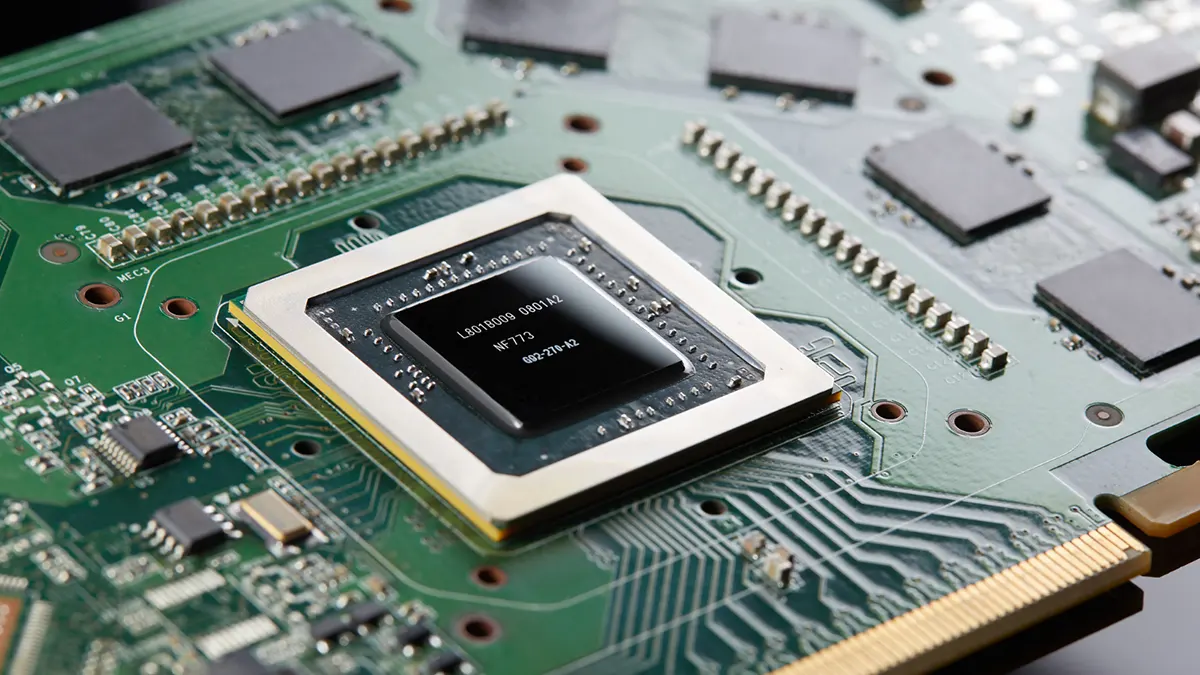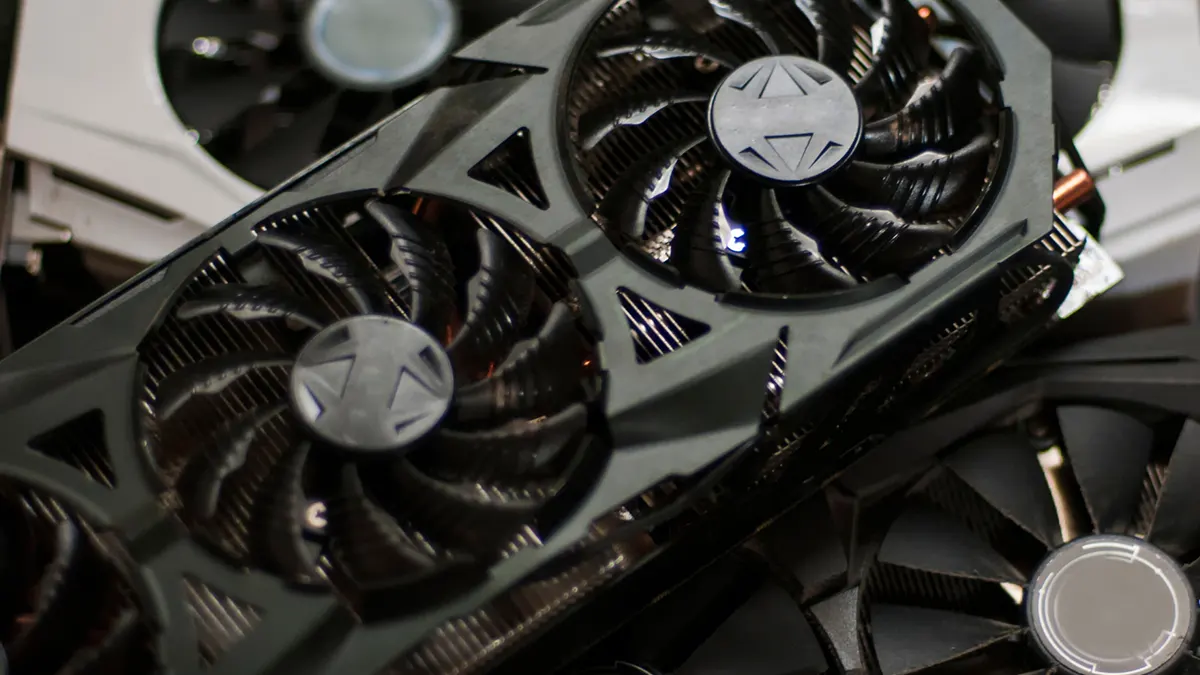Graphics cards are one of the most essential hardware for a PC build. They are commonly considered part of a gaming rig, but their use is not limited to gaming. A GPU is designed to handle the graphical computational load of your system and provide additional processing power for graphic-intensive processes. One of these processes is games, built on a specific game engine that requires a graphics card to render its graphical assets. Many applications and tasks require the use of both CPU and GPU for faster output. Examples of these applications are Video editing software, Engineering simulation programs, 3D modeling software, Visual effects programs, and so on. Today we are going to discuss what is GPU artifacting and things you can try to fix it.
Many processors have integrated graphics processors that are sometimes enough for a casual user experience. However, many graphics card options are available with various prices and discrete attributes for more hardcore and extreme computing needs. These graphics cards lie in the category of computer expansion cards that are compatible with the PCIe slots on a motherboard. Two industry-leading brands, AMD & Nvidia, manufacture graphics cards with much to offer. The prices of these cards can vary depending on what features they offer.
An intrinsic graphics card is a piece of hardware built on a PCB with integrated circuitry. While newer GPUs are a lot more powerful and robust, capable of serving their user for a long time, they are still susceptible to annoying and threatening problems. One of these problems is “Artifacting,” which I will thoroughly discuss in this article. Artifacts can be a serious problem with a GPU, as it might indicate something grave for your hardware. However, it is one of those problems that can be easily fixed if you haven’t pushed your GPU too far without care.
Let’s do a deep dive into the problem of Artifacting and look at its different aspects along the way.
What is GPU Artifacting?
Artifacting is the manifestation of distortions or corrupt graphics on your computer screen. Simply put, it is a visual defect that shows on your computer screen or a monitor as stutters, flickers, unwanted stretching of visuals, static or snow screen, and so on.
It usually occurs while your GPU is under a considerable computational load, such as playing games. The graphics of the games you are playing can get corrupted with various distortions like stuttering, formation of lines in-game, etc.
Several reasons can cause visual artifacts, like your power supply not delivering enough power to your GPU, overheating of your GPU, faulty or old graphics drivers, dust on your GPU, loose connections, and a few more reasons which I will discuss in detail in later sections.
It is an indication of a problem with your graphics card. Although not every type of artifacts is severe and can be fixed easily, it should be taken seriously as it might be pointing towards a more severe problem with your GPU. For example, pixel flickering, black screen, and computer crashes can typically be solved with the help of updating or reverting your graphics drivers. They are virtually harmless and can occur on newer GPUs with faulty or incorrect drivers. But if your game graphics are getting distorted, this seems to occur repeatedly. At the same time, gaming, then you should worry about your GPU, as this indicates that your GPU’s health is deteriorating and it’s time to replace it.
How to identify GPU Artifacting?
The first and most important step for solving a problem is identifying it. So how do you identify a visual artifact? It’s pretty simple. Artifacts appear on your computer screen as undesirable visuals or visual anomalies that suddenly start appearing and weren’t there before. They can take different shapes or forms but are most commonly present as stuttering, screen tearing, and texture flickering.
Other culprits are strange color patterns, flickers, black screens, screen snow, static, etc. These artifacts can be annoying and usually appear while playing games because your graphics card is heavily processed. As artifacts indicate a problem with graphics cards, they can cause your system to malfunction or completely break down.
Artifacts manifest themselves in several ways and are fairly simple to identify. But some are very subtle, posing as stutters and different color changes. Below, I have listed the most common artifacts that usually show up alone or with other problems.
Stuttering
If you are into gaming and like to push your graphics card to its peak to extract every ounce of its performance, you might encounter stuttering in your games. Stuttering is the janky or jumpy appearance of frames on your screen. It reduces the smoothness of the frames you see, causing them to appear in a stop-motion-like movement. Stutter is usually accompanied by a drop in your game’s frame rate, resulting in a jumpy image output.
Artifacts can cause stuttering, which can appear as flickering colors or textures. They cause the frame rates to drop, and games can hang or lag. Sometimes, the game will continue after that lag, but other times, this lag can cause a black screen, which forces your system to restart, resulting in a frustrating experience.
Texture Flickering
Texture flickering is another type of Artifacting that occurs on a faulty graphics card. It can show up as stretching of textures, blocks, lines originating from a specific texture, etc. These distortions and image faults can cause the screen to go black or the computer crashes.
Texture artifacts are due to some severe issues with the hardware. Usually, they indicate a problem with the video memory of your GPU and mean that your GPU is damaged. The damage is often beyond repair and cannot be fixed with software and driver tweaking. It warrants the replacement of the graphics card.
Screen Tearing
Screen tearing is the appearance of horizontal lines that divides the image on your screen, Asymmetrically. Many reasons can cause it, but the graphics card is usually the main culprit. It can be fixed relatively more easily than other artifact issues.
Its most probable reason is that your GPU isn’t meeting the demands of the visual outputs you are subjecting it to. Simply put, your GPU isn’t powerful enough to run demanding games, or you are playing games at higher graphics that your GPU isn’t capable of running. It isn’t a grave problem; you can lower the graphics to minimize VRAM usage. Moreover, a simple driver update can sometimes solve this issue, as GPU manufacturers consistently put out better and compatible drivers for newer games.
What are the causes of GPU Artifacting?
There are several reasons for Artifacting to occur. It is a fairly common problem that can happen to anyone and can be a frustrating experience. It can be a simple distortion to full-blown PC crashes and texture flickers. To successfully identify what is causing artifacts in your system, you must first know what problems can cause this. Sometimes, it can be a single problem, and a single fix can handsomely solve it. But other times, a combination of problems might be causing it.
I have listed the most common reasons your GPU might be susceptible to artifacts.
Physical Damage
A graphics card is an intricately built piece of hardware with micro and nano-sized components and carefully soldered connections. That’s why you should always handle it with utmost care so it doesn’t get damaged during installation or cleaning.
GPUs are prone to show artifacts during the processing of graphic-intensive tasks if they have suffered from physical damage. The damage can be a crack in PCB, torn connections, broken solder joints, or dents. All these damages are highly harmful to your GPU and require a graphics card replacement if it starts showing artifacts. These artifacts range from lines or texture malfunctions to audio problems such as crackling sounds or unwanted noise.
Overheating
Many computer users and even hardcore gamers aren’t active or conscious enough to properly and periodically clean their PC. Although many PC builds are equipped with powerful fans, dust filters, and robust cooling systems to avoid the problem of dust accumulation and overheating, over time, a good quantity of dust can settle inside your PC and its components, such as the graphics card and it can cause your GPU to overheat despite it having a sound cooling system.
Overheating is a common issue in GPUs, and it can be avoided with proper cleaning and the application of new thermal pastes. An overheating GPU can cause artifacts, and it is easily avoidable.
You can simply check if your GPU is overheating or not. The first method is physical, qualitative, and dangerous, but you shouldn’t be afraid if you have enough computer experience. You can touch or hover your hand around the graphics card under considerable computational stress to check whether it is unusually hot. The second quantitative method uses performance metrics software such as the “MSI AFTERBURNER.” By noting the temperature reading of your GPU while it is in use, you can get an idea of how much it’s overheating.
Once you are sure the GPU is overheating, it is straightforward to fix. It needs some cleaning and extra care, and you will be back to a clean gaming experience in no time.
Power Supply Problem
One of the most common issues of artifacts is that your GPU isn’t getting enough power to fuel its processing needs. Power supply problems are much more common and can cause artifacts and complete system failures if not handled.
Power supply issues can manifest in two ways; the first one is that your GPU is getting an uneven amount of voltage which causes it to malfunction under heavy loads, and artifacts start to show up. An optimum voltage is required from the power supply for your GPU to function adequately.
The second issue is that your 6-pin or 8-pin GPU power connector is faulty and isn’t supplying enough power from the power supply to GPU. This can also cause black screens and artifacts, especially during gaming.
Both problems point towards an issue with the power supply. While some power supplies offer removable connectors that can be replaced with a newer one to check whether this fixes the issue, you will be better off with a whole new power supply.
Driver Issues
Another commonly occurring issue that can cause artifacts is older or malfunctioning drivers. Drivers are essential files for specific hardware that help you communicate, control and optimize the use of that hardware.
It is necessary to upgrade your graphics card drivers. An older version of drivers can cause artifacts in games in the form of dots, flickering lights, lines, etc. These artifacts are easily fixed with a driver update because they can be downloaded from the manufacturer’s website, and their installation is effortless.
How to Fix GPU Artifacting
Artifacts can be easily fixed with a few methods. It mainly occurs due to a problem with the GPU, and sometimes, it can be solved by a relatively simple fix. Below I have listed some spots that might work for you.
Run A Stress Test
To ensure that your GPU is the main culprit for artifacts on your system, you can run a stress test to see whether something appears out of the blue. You can download software like “FURMARK” or “3DMARK” for a stress test. Once you run this software, it will start putting a graphical load of several intensities on your GPU. If you are witnessing artifacts, then your GPU is the culprit.
If the graphics card is overheating, you should up the ante on your cooling options with more fans, replace the thermal paste, or increase the power of fans on the graphics card to bring more airflow to its core.
Check for Hardware connections.
Make sure that your hardware is appropriately and thoroughly connected. Graphics cards commonly use a 6-pin or 8-pin connector as a power delivery system from the power supply. A loose or faulty connector can cause the voltage and current to vary, resulting in lesser power supplied to the GPU.
Check whether the display connections between the graphics card and monitor are working fine or not. You can easily buy used GPUs on many platforms, and sometimes they have one or two graphics display ports that don’t work correctly. Or a display port on a new GPU can also get damaged or corrupted. So by changing display ports, you might be able to fix the artifact problem.
Also, a graphics card is made to fit the PCI Express x16 port on a motherboard. Ensure that the GPU is rightfully fixed in that port, or carefully remove and reinstall your GPU in the same place until you hear the click sound of the port’s clip or latch. This will also fix your artifact issues if it wasn’t correctly installed in the first place.
Update Drivers
I can not emphasize this one enough. Update your graphics drivers consistently. With the release of new games and triple-A titles, both AMD and Nvidia put out updated graphics drivers on their websites or the control software installed on your computer with the drivers. These drivers are hugely improved versions of their previous ones and help significantly capture good performance from your graphics card.
An outdated graphics driver is prone to show problems, mainly while gaming, necessitating their upgrade. This fix seems counter-intuitive, but you will be surprised how many GPU problems can be fixed with regular updates of drivers.
AMD and Nvidia offer fully fleshed-out graphics control centers that simplify driver upgrades. Check for the latest graphics drivers on the main screen of the control center, and download and install those drivers. After installation, restart your PC. Hopefully, your artifacts issues will vanish.
Clean the Dust off your hardware.
Dust and humidity are a nemesis to the PCB. Dust accumulation can cause airflow restriction to the GPU core, resulting in an overheating GPU. An overheating graphics card has a hindered performance and can cause artifacts.
Check whether your GPU has accumulated noticeable dust or debris on its fans and backplate. If it has, carefully remove the GPU from the motherboard and clean it thoroughly and elegantly. Use a soft cloth or a brush with soft bristles.
This will solve your artifacts issues, and to save yourself from future trouble, make a habit of cleaning your GPU after some time.
Conclusion of GPU Artifacting
The first step of the solution to every problem is its identification; only then will you be able to fix it fully. These problems can range from overheating of your GPU to severe hardware damage. Once the issue is highlighted, it can be efficiently tackled with several fixes.
Artifacting is a prevalent issue and can occur in older or newer graphics cards alike. Its seriousness can vary, but it is never a good sign for your hardware. This issue can arise at any time, and it is easily fixable in most cases. Many factors can cause it, and I have listed the usual suspects in this article to convey an idea about these causes.
To avoid issues like artifacts, you should follow the discussed steps adequately to have a problem-free user experience.


